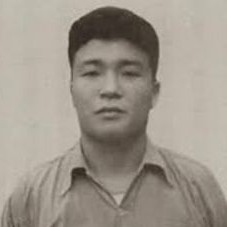
1923 - 1944
Seisaku Nakamura
Summary
Name:
Seisaku NakamuraNickname:
The Hamamatsu Deaf KillerYears Active:
1938 - 1942Birth:
September 10, 1923Status:
ExecutedClass:
Serial KillerVictims:
9Method:
StabbingDeath:
July 24, 1944Nationality:
Japan
1923 - 1944
Seisaku Nakamura
Summary: Serial Killer
Name:
Seisaku NakamuraNickname:
The Hamamatsu Deaf KillerStatus:
ExecutedVictims:
9Method:
StabbingNationality:
JapanBirth:
September 10, 1923Death:
July 24, 1944Years Active:
1938 - 1942bio
Seisaku Nakamura was born around 1924 in Shizuoka Prefecture, Japan. Despite being deaf, he was intelligent and achieved high academic marks. However, he faced ostracism from both his family and society due to his disability, leading to social misfit behaviors. Nakamura developed an obsession with samurai culture and enjoyed films depicting assassinations using Japanese swords.
murder story
His first known attacks occurred on 22 August 1938, when the 14-year-old attempted to rape two women. When they resisted, he stabbed both to death. Although these two killings were initially treated as isolated crimes, they are often excluded from his later classification as a serial murderer due to his age and lack of formal conviction at that time.
On 18 August 1941, at age 17, Nakamura attacked four more victims. He murdered one woman and seriously injured another in Hamamatsu. Two days later, on 20 August 1941, he struck again, killing three more people in the same area. The sudden spree of knife attacks caused widespread fear, though official reports were suppressed due to government control over the media during wartime.
The violence escalated when Nakamura turned on his own family. On 27 September 1941, he murdered his brother and injured his father, sister, sister-in-law, and niece in a violent outburst at the family home. Despite the evidence, relatives and neighbors chose not to alert authorities, fearing both revenge and social disgrace.
Nakamura’s final known murders occurred on 30 August 1942, when he killed a couple, their son, and their daughter, and attempted to sexually assault another daughter who survived. This massacre finally drew the attention of local investigators. However, information was tightly controlled under the wartime press censorship laws, which prohibited reports that might cause “unnecessary social alarm.” As a result, the crimes remained largely unpublicized, and Nakamura was not immediately apprehended.
His own family members, aware of his guilt, lived in silence. It was not until 12 October 1942 that police finally arrested Nakamura for nine confirmed murders. During interrogation, he confessed to two additional killings, bringing his total to eleven. The following month, on 11 November 1942, his father, Fumisada Nakamura, committed suicide, reportedly from guilt and shame over his son’s crimes.
Nakamura was tried as an adult under the Wartime Criminal Special Law (戦時刑事特別法), a legal statute allowing rapid trials and executions during World War II. His defense team cited psychiatric evaluations that deemed him “not guilty by reason of insanity”, referencing his deafness, social isolation, and psychological immaturity. However, wartime authorities dismissed this defense in the interest of expediency and national morale.
The court found Seisaku Nakamura guilty of nine counts of murder and sentenced him to death in February 1944. His execution was carried out by hanging on 24 July 1944 at the age of 20.